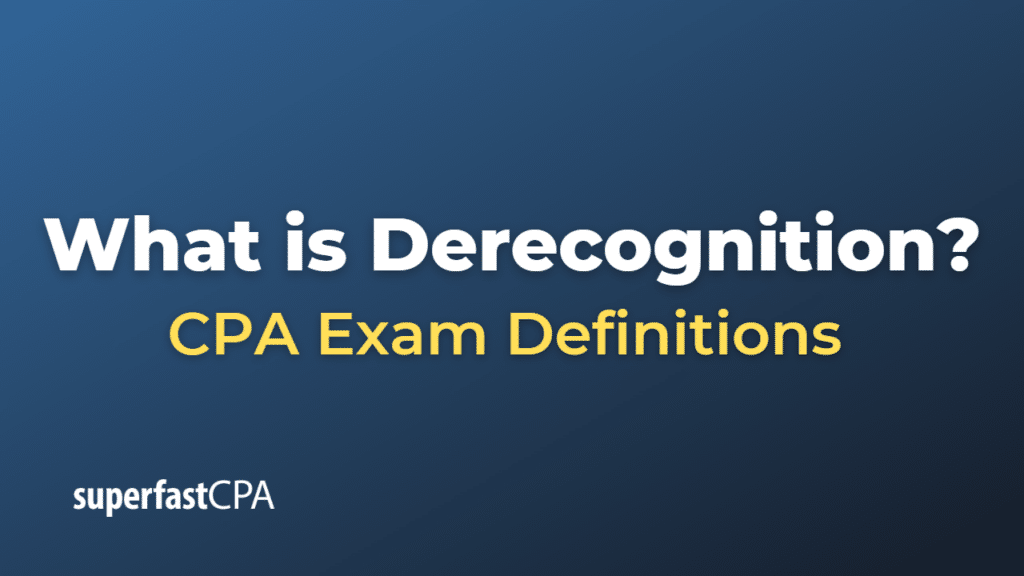Derecognition
Derecognition is an accounting concept that refers to the removal of a long-lived asset or liability from a company’s balance sheet. Derecognition can occur due to several reasons, including disposal, sale, termination of a contract, or when an asset is no longer expected to generate future benefits.
Here’s a brief explanation for both assets and liabilities:
- Asset Derecognition: This occurs when the carrying amount of an asset is removed from the balance sheet. This usually happens when an asset is sold, discarded, or lost. For example, if a company sells a piece of machinery, it will derecognize the asset by removing its carrying amount (original cost minus accumulated depreciation) from its books. Any difference between the selling price and the carrying amount is recognized as a gain or loss in the income statement.
- Liability Derecognition: This occurs when a company fulfills its obligation, and the liability is no longer outstanding. For instance, when a company repays a loan, the liability associated with that loan is derecognized and removed from the balance sheet.
In both cases, the principle of derecognition ensures that the financial statements accurately reflect the resources and obligations of a company. Any gains or losses from the derecognition process are usually reported in the income statement, impacting the company’s net income.
Example of Derecognition
Let’s illustrate both asset and liability derecognition with examples.
Asset Derecognition:
Suppose a company originally purchased a machine for $50,000. Over the years, it has recorded $30,000 in accumulated depreciation against the machine. Therefore, the carrying value of the machine on the company’s balance sheet is $20,000 ($50,000 cost – $30,000 accumulated depreciation).
Now, if the company sells the machine for $25,000, it must derecognize the machine from its balance sheet. This means removing the $20,000 carrying value from its assets. The company will also recognize a gain of $5,000 on the sale, which is the difference between the sale price ($25,000) and the carrying value ($20,000). This gain will be recorded in the income statement.
Liability Derecognition:
Let’s assume a company took a loan of $100,000 five years ago. Over the years, it has repaid $60,000, so the remaining loan payable on its balance sheet is $40,000.
If the company now repays the remaining $40,000, it will derecognize this loan from its balance sheet. The cash account will decrease by $40,000, and the loan payable account will also decrease by $40,000. This transaction does not impact the income statement as loan repayment is a financing activity, not an operating activity.
So, through these examples, you can see how derecognition works for both assets and liabilities in financial accounting.













